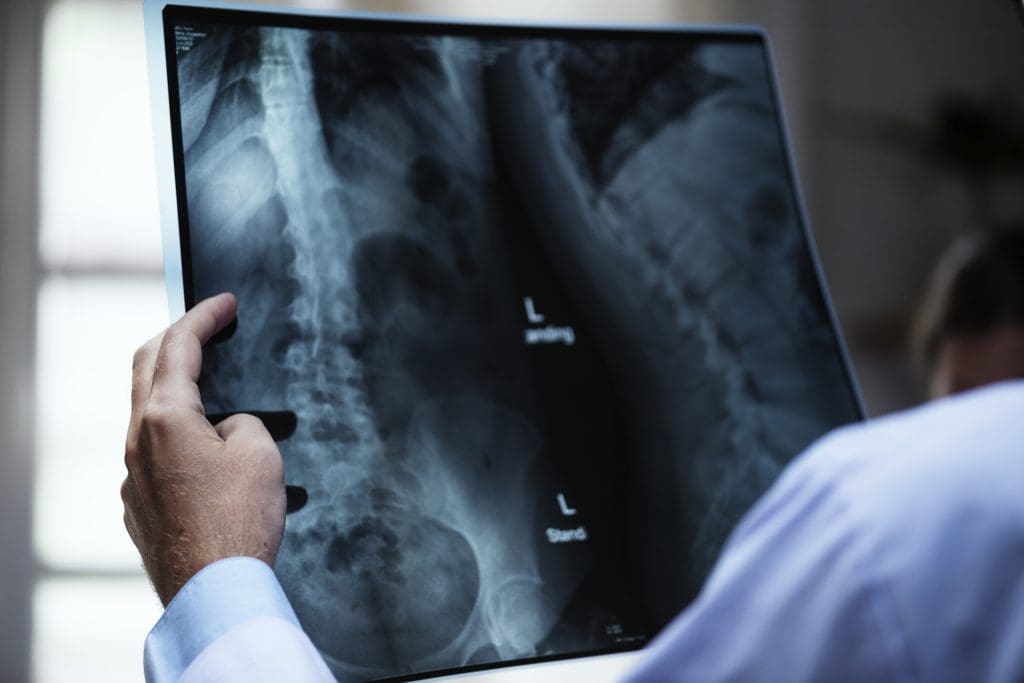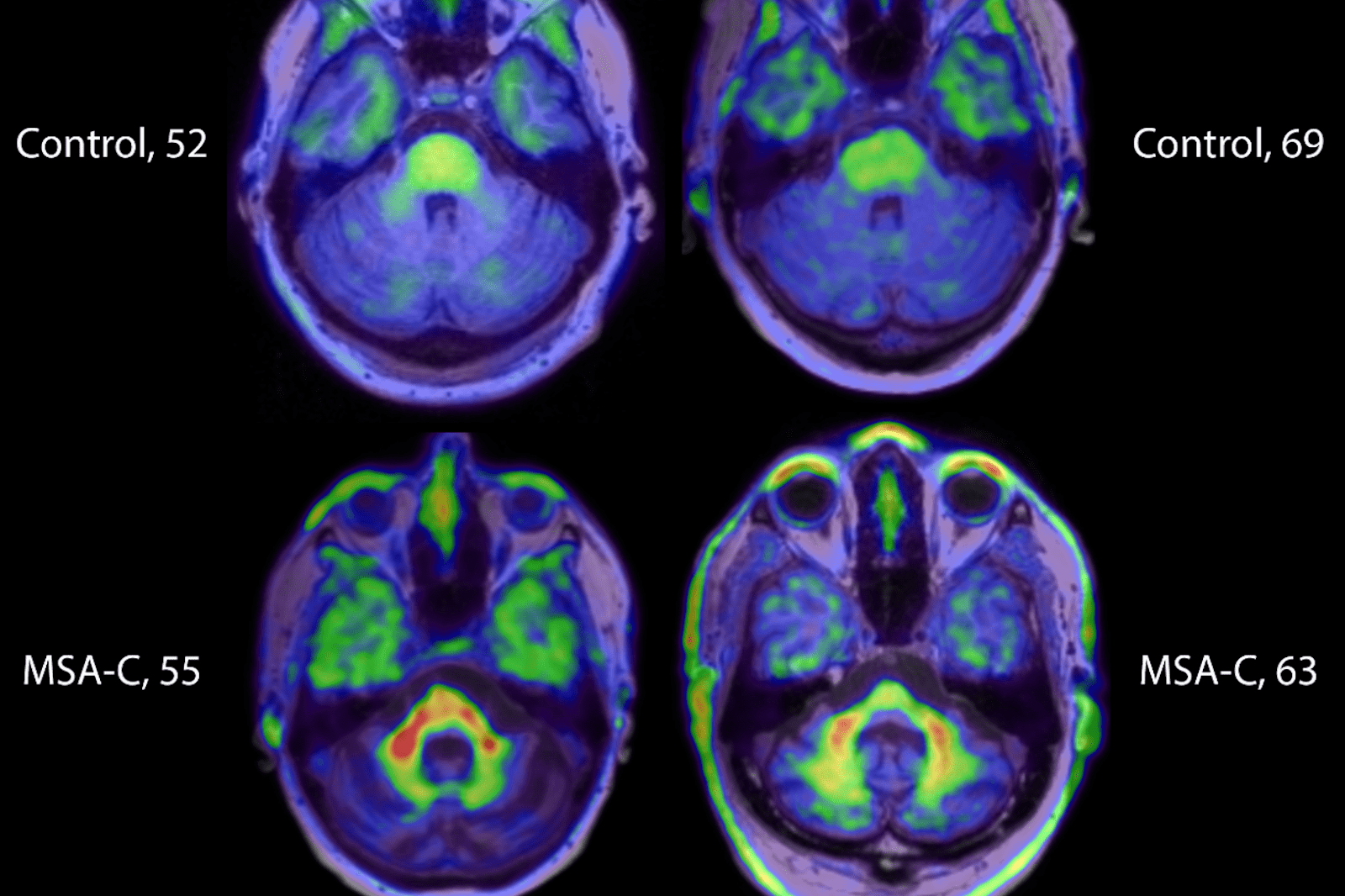Last Updated on November 27, 2025 by Bilal Hasdemir
How to test for lung cancer? Lung cancer is a major cause of death worldwide. Early detection can greatly improve treatment results. The American Lung Association says early detection and biomarker testing can lead to better survival rates for lung cancer patients.
Effective diagnostic methods are very important. There are many tests to find lung cancer, like the sputum cytology test. It checks sputum for cancer cells.
Key Takeaways
- Early detection improves lung cancer treatment outcomes.
- Lung cancer detection methods include the sputum cytology test.
- Understanding diagnostic tests is key for effective lung cancer screening.
- Biomarker testing is a big part of lung cancer diagnosis.
- There are many screening tests for early lung cancer detection.
Understanding Lung Cancer and the Importance of Early Detection

Finding lung cancer early is key to better treatment and survival. Lung cancer is a major cause of cancer deaths globally. It’s important to know its types, risk factors, and why early detection is critical.
Types of Lung Cancer and Risk Factors
Lung cancer is mainly split into two types: Non-Small Cell Lung Cancer (NSCLC) and Small Cell Lung Cancer (SCLC). NSCLC makes up about 85% of cases and includes subtypes like adenocarcinoma and squamous cell carcinoma. SCLC is more aggressive and linked to smoking. Risk factors include smoking, exposure to harmful substances, family history, and genetic mutations.
The American Lung Association stresses the need for biomarker testing in lung cancer patients. This shows how complex lung cancer is. It requires treatments tailored to the cancer’s type and characteristics.
Why Early Detection Matters
Finding lung cancer early boosts survival chances. Early-stage lung cancer has more treatment options, leading to better survival rates. Screening tests, like low-dose CT scans, help detect lung cancer early. This reduces mortality rates.
Knowing the risk factors and types of lung cancer is essential for early detection. By identifying high-risk individuals and using the right lung cancer detection methods, healthcare can improve outcomes. The role of early screening tests in detecting and treating lung cancer is vital.
Initial Screening Methods for Lung Cancer
Screening for lung cancer starts by finding people at high risk and using the right tests. It’s mainly for those who have smoked a lot. They are more likely to get lung cancer.
Who Should Get Screened for Lung Cancer
Adults aged 50 to 80 with a smoking history should get screened. The United States Preventive Services Task Force (USPSTF) says those who smoked heavily and quit recently should get checked every year. They use low-dose computed tomography (LDCT) for this.
Other risks include being around harmful substances like asbestos or radon. A family history of lung cancer also raises the need for screening.
Lung Cancer Screening Guidelines in the United States
In the U.S., the USPSTF guidelines are key for lung cancer screening. They push for yearly LDCT scans for those at high risk. It’s also about making choices together, weighing the good and bad of screening.
| Risk Factor | Screening Recommendation |
| Age 50-80, 20+ pack-years smoking history | Annual LDCT screening |
| Current smoker or quit within past 15 years | Annual LDCT screening |
| Exposure to asbestos, radon, or arsenic | Consider LDCT screening |
Lung Cancer Screening Programs: How to Access Them
To get into lung cancer screening programs, talk to your doctor. Many places and insurance plans help those who qualify. The National Lung Screening Trial (NLST) showed LDCT can save lives.
Start by talking to your doctor about your risks. They can send you to a screening place. Also, check with your insurance to see what they cover.
Recent clinical trials such as PANOVA-3 highlight new treatment approaches for cancer. This makes screening and finding cancer early even more important.
Low Dose CT Scan: The Gold Standard for Lung Cancer Screening
Early detection is key in fighting lung cancer. Low-dose CT scans are a vital tool in this fight. They use less radiation than traditional CT scans, making them safer for screenings.
How Low Dose CT Scans Work
Low-dose CT scans use X-rays to show detailed lung images. They can spot small tumors that chest X-rays miss. You lie on a table that slides into a CT scanner. The scanner rotates around you to take images from different angles.
Studies show low-dose CT scans are effective in lung cancer screening. They help find cancer early, improving treatment chances.
Benefits and Limitations of LDCT
Low-dose CT scans are good at finding lung cancer early. They use less radiation than regular CT scans. But, they can also lead to false positives, causing extra tests and worry.
Key benefits:
- High sensitivity in detecting lung cancer
- Early detection improves treatment outcomes
- Lower radiation dose compared to standard CT scans
It’s important to consider both the benefits and limitations of low-dose CT scans for lung cancer screening.
High Risk Screening CT Protocols
People at high risk, like smokers or those exposed to carcinogens, should get annual low-dose CT scans. These scans are designed to find tumors while using less radiation.
Guidelines for these scans stress the need for regular screenings. This helps doctors catch lung cancer early, when it’s most treatable.
Chest X-Ray for Lung Cancer Detection
While low-dose CT scans are the top choice for lung cancer screening, chest X-rays also have a role. Chest X-rays are easy to get and quick. They can spot some signs of lung cancer.
Procedure and What It Shows
A chest X-ray is a simple test that uses X-rays to see inside the chest. It looks at the lungs, heart, and blood vessels. It can find lung problems like tumors, infections, and swelling.
In lung cancer cases, a chest X-ray might find a mass or nodule that could be cancer.
Limitations of Chest X-Rays in Cancer Detection
Even though chest X-rays are useful, they have big limits in finding lung cancer. They’re not as good as low-dose CT scans, which are better for catching cancer early. Small tumors or those hidden by other chest structures might not show up on an X-ray.
X-rays can’t say for sure if something is cancer. They can only point out something odd that might need more tests.
When X-Rays Are Recommended vs. Other Methods
Chest X-rays might be used first in some cases or when better tests aren’t available. But for people at high risk of lung cancer, low-dose CT scans are better. They’re more likely to find cancer early.
| Diagnostic Method | Sensitivity for Lung Cancer | Typical Use |
| Chest X-Ray | Lower | Initial assessment, general health check-ups |
| Low-Dose CT Scan | Higher | Screening for high-risk individuals |
Choosing between chest X-rays and other tests depends on many things. These include the patient’s risk, symptoms, and what doctors think is best.
Sputum Cytology Test: Examining Lung Cells
The sputum cytology test is a non-invasive way to check for lung cancer. It looks at sputum for cancer cells. This can lead to an early lung cancer diagnosis.
How the Test Works
The test is simple. Patients cough up sputum, which is then analyzed in a lab. Under a microscope, the sample is checked for cancer cells. This helps find lung cancer early, mainly in those at high risk.
Key steps in the sputum cytology test include:
- Coughing up sputum into a sterile container
- Sending the sample to a laboratory for analysis
- Microscopic examination for abnormal cells
When Doctors Recommend Sputum Testing
Doctors suggest this test for those with lung cancer symptoms or at high risk. It’s a good first step, often used with other tests.
Common reasons for recommending sputum cytology include:
- A history of smoking or exposure to tobacco smoke
- Symptoms such as persistent coughing or difficulty breathing
- Previous exposure to carcinogens like asbestos or radon
Accuracy and Limitations
The sputum cytology test is helpful but not perfect. It can miss some lung cancers. Yet, it’s easy and non-invasive, making it part of a full check-up.
The test’s accuracy depends on the sputum quality and lab skill. Despite its flaws, it’s a key part of finding lung cancer.
Advanced Imaging Techniques: PET Scans and MRI
PET scans and MRI are key tools in lung cancer diagnosis. They have changed how we find, stage, and treat lung cancer.
PET Scan Detection of Lung Cancer
PET scans are vital for finding and staging lung cancer. They show where cancer is active. This helps tell if a tumor is cancerous or not.
The benefits of PET scans include:
- They are very good at finding cancerous tissues.
- They help see if cancer has spread to other parts of the body.
- They guide doctors in choosing the best treatment.
MRI for Lung Cancer Assessment
MRI is another important tool for lung cancer assessment. It gives detailed pictures of the lungs and nearby tissues. This helps see how far a tumor has grown.
MRI is great for:
- Checking if cancer has touched important structures like blood vessels and nerves.
- Seeing if cancer has spread to the chest wall or spine.
- Helping surgeons plan the best surgery.
Comparing Diagnostic Imaging Methods
PET scans and MRI each have their own strengths and weaknesses in lung cancer diagnosis. PET scans are good at showing metabolic activity. MRI is better at showing soft tissue details.
Choosing the right imaging method is important. It depends on the cancer’s stage, where it is, and the patient’s health.
Key considerations include:
- The sensitivity and specificity of each imaging modality.
- How well they show tumor spread and invasion.
- How they help decide treatment.
Understanding PET scans and MRI helps doctors make better diagnostic plans for lung cancer patients.
Invasive Diagnostic Procedures
When doctors suspect lung cancer, they use invasive tests to confirm it. These tests help get tissue or cell samples from the lungs. This is for further study.
These procedures are key for a correct lung cancer diagnosis. They show how far the disease has spread. The choice of test depends on the tumor’s location and size, and the patient’s health.
Bronchoscopy Procedure Explained
A bronchoscopy lets doctors see inside the airways and lungs. A flexible tube with a camera is inserted through the mouth or nose. This way, they can take tissue or cell samples.
- The procedure is done under sedation to reduce pain.
- It helps find tumors, inflammation, or other issues in the airways.
- It also allows for sample collection for further tests.
Needle Biopsy of the Lung
A needle biopsy uses a thin needle to get tissue from the lung. It’s used when the tumor is near the chest wall or can be reached through the skin.
The procedure is guided by CT scans or ultrasound. This ensures the needle is placed correctly.
- The skin is cleaned and numbed with local anesthesia.
- A small incision may be made for the needle’s insertion.
- The tissue samples are then checked under a microscope for cancer cells.
Tissue Biopsy for Lung Cancer Confirmation
A tissue biopsy is the best way to diagnose lung cancer. It removes a larger tissue sample for cancer cell examination.
Tissue biopsies can be done through surgery or during a bronchoscopy. The samples help determine the lung cancer type and stage. This is vital for treatment planning.
Knowing the results of these tests is important. It helps patients make informed decisions about their care.
Blood Tests and Non-Invasive Cancer Testing Methods
Researchers are working hard to find new ways to detect lung cancer early. They are looking into blood tests and non-invasive methods. These new tools aim to be more accurate and less painful than old methods.
Lung Cancer Blood Tests: What They Can Reveal
Blood tests for lung cancer are being made to find special signs of the disease. They might spot cancer early, track how it grows, and see how well treatments work. Some tests look for DNA, proteins, or other signs that could mean lung cancer.
Studies show some blood markers might mean a person is at higher risk for lung cancer. For example, high levels of certain proteins could mean cancer cells are there. But, these tests aren’t perfect yet. They’re usually used with other tests to get a clearer picture.
Emerging Non-Invasive Testing Technologies
New ways to test for lung cancer include breath analysis and urine tests. They look for special signs linked to lung cancer. These are just starting out, but they might help a lot in the future.
New tech also includes better imaging and AI to help doctors make more accurate diagnoses. These new tools could really help find lung cancer sooner.
Limitations of Current Non-Invasive Methods
Non-invasive tests have their good points, but they also have downsides. How well these tests work is very important and needs more study. Right now, many of these tests aren’t good enough to replace old methods.
Lung cancer is complex, so one test might not work for everyone. Doctors often use a mix of tests to get a correct diagnosis and understand how far the cancer has spread.
Understanding Your Diagnosis: Pathology Reports and Molecular Testing
Getting to know your lung cancer diagnosis starts with looking at your pathology report and molecular testing results. This deep understanding is key to finding the right treatment.
Interpreting a Lung Cancer Pathology Report
A pathology report is a detailed document that shows your diagnosis based on tissue or cell exams. For lung cancer, it will tell you the cancer type, stage, and other important details.
Key components of a lung cancer pathology report include:
- Type of lung cancer (e.g., adenocarcinoma, squamous cell carcinoma)
- Grade of the tumor
- Stage of the cancer
- Presence of specific genetic mutations
A leading oncologist says, “The pathology report is the core of lung cancer diagnosis. It gives vital info for treatment choices.”
“The pathology report is key for understanding a patient’s lung cancer. It helps make treatment plans that fit the patient.” –
Oncologist
Molecular Testing for Targeted Treatment Options
Molecular testing is a big part of the diagnosis, mainly for non-small cell lung cancer (NSCLC). It finds specific genetic mutations for therapies.
| Genetic Mutation | Targeted Therapy |
| EGFR mutation | Osimertinib |
| ALK rearrangement | Crizotinib |
Molecular testing has changed lung cancer treatment. It gives patients more tailored and effective treatments.
Lung Cancer Diagnosis Steps: From Suspicion to Confirmation
The path to a lung cancer diagnosis has many steps. It starts with noticing symptoms or getting screened, then moves to diagnostic tests.
- Initial screening or symptom evaluation
- Imaging tests (e.g., CT scans, X-rays)
- Biopsy or other invasive diagnostic procedures
- Pathology report analysis
- Molecular testing for genetic mutations
Knowing these steps and what each test shows is vital. It helps patients understand their diagnosis and treatment plan.
Conclusion: Navigating Lung Cancer Testing and Next Steps
Early detection and proper diagnosis are key for treating lung cancer effectively. It’s important for those at risk to know about the lung cancer detection methods out there.
A lung cancer screening program can spot the disease early, when it’s easier to treat. An early screening test, like a low-dose CT scan, can find lung cancer before symptoms show up.
If you’re diagnosed with lung cancer, team up with your doctor to find the best treatment. This might include surgery, chemotherapy, and radiation therapy.
Knowing about the diagnostic methods and the need for early detection helps you take care of your lung health. If you’re at risk for lung cancer, talk to your doctor about joining a lung cancer screening program or getting an early screening test.
FAQ
What is the most effective method for detecting lung cancer?
The low-dose CT scan is the top choice for lung cancer screening. It’s best for people at high risk.
Who should undergo lung cancer screening?
People aged 50-74 with a smoking history of 20 pack-years or current smokers should get screened yearly. A low-dose CT scan is recommended.
What is a sputum cytology test, and how does it work?
This test looks at sputum for cancer cells. It’s easy and can spot lung cancer, mainly in those with symptoms.
How accurate is a sputum cytology test?
Its accuracy varies. But it’s not as good as low-dose CT scans or biopsies for finding lung cancer.
What is the role of PET scans in lung cancer detection?
PET scans show how active lung nodules or tumors are. They help find and stage lung cancer.
What is the difference between a needle biopsy and a tissue biopsy?
Needle biopsies use a needle to get cells or tissue. Tissue biopsies remove more tissue for examination.
How do I understand my lung cancer pathology report?
The report details your diagnosis, including the cancer type and stage. Talk to a doctor to understand what it means for your treatment.
What is molecular testing, and how does it guide treatment decisions?
Molecular testing looks at tumor genetics to find treatment targets. It helps choose the best treatments, like targeted therapies.
Are there any emerging non-invasive testing technologies for lung cancer detection?
Yes, new blood tests and methods are being developed. They aim to improve lung cancer detection without invasive procedures.
What are the next steps after a lung cancer diagnosis?
After diagnosis, you’ll get your cancer staged. Then, you’ll discuss treatment options and create a personalized plan with your doctor.
How can I access lung cancer screening programs?
Talk to your doctor or check with local hospitals. You can also visit the American Lung Association or National Cancer Network websites.
What are the benefits and limitations of low-dose CT scans for lung cancer screening?
Low-dose CT scans are great for finding lung cancer in high-risk groups. But, they can lead to false positives, radiation exposure, and overdiagnosis.






